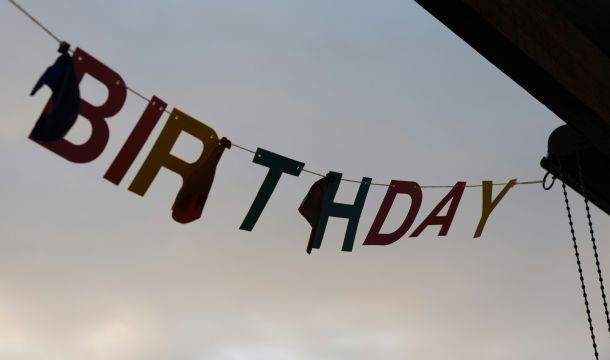Supreme Court Addresses Wage-Hour Collective Actions and Statistical Proof in Tyson Case
On March 22, 2016, the U.S. Supreme Court affirmed a lower court decision which found Tyson Foods liable for a $2.9 million damage claim relating to overtime pay for time spent donning and doffing protective equipment. The case was brought as a "collective" action under federal wage-hour laws but as a "class action" and under applicable state law. Tyson's argued it was not proper to permit the employees to pursue their claims as a class because the primary method of proving injury assumed each employee spent the same time donning and doffing protective gear, even though differences in the type of gear may have meant that, in fact, employees took different amounts of time to don and doff. Tyson also argued that certification was improper because damages awarded to the class may be distributed to some persons who did not work any uncompensated overtime. The Supreme Court did not distinguish between collective and class actions, but found that there was no error in the decision to certify and maintain the class. As a second issue, the Court finds that the challenge that under the verdict some employees may receive damages even though they do not work uncompensated overtime, was premature, as Tyson might still raise a challenge to the proposed method of allocation when the case returned to the lower court for dispersal of the award.
Background Facts
A brief look at the facts may be helpful in reviewing the issues. Employees of the plant were previously paid under a "gang-time" pay system, which compensated them only for time spent at their work stations. Later, Tyson implemented an additional four (4) minutes a day of pay which it called "K-code time." This was the amount of time Tyson's estimated employees needed to don and doff their gear. Later still, Tyson stopped paying K-code time uniformly to all employees, and compensated some employees for between four (4) and eight (8) minutes but paid others nothing beyond their gang-time wages. No time records were kept to record the time each employee spent donning and doffing.
The jury was left to determine whether the time spent donning and doffing protective equipment was compensable; whether Tyson was required to pay for donning and doffing during meal breaks; and the total amount of time spent on work that was not compensated under Tyson's gang-time system. The plaintiffs relied on what was described as "representative evidence," including employee testimony, video recordings of donning and doffing, and most importantly, a study performed by an industrial relations expert hired by the plaintiffs. This expert conducted 744 video-taped observations and analyzed how long various donning and doffing activities took. He then averaged the time taken in the observations to produce an estimate of 18 minutes a day for the cut and retrim departments and 21.25 minutes for the kill department. A second plaintiffs' expert then estimated the amount of uncompensated work each employee did by adding the estimated average donning and doffing time to the gang-time each employee worked and then subtracting any K-code time. These calculations supported an aggregate award of approximately $6.7 million, but the jury awarded the class about $2.9 million. The jury returned a special verdict finding that time spent in donning and doffing protective gear at the beginning and end of the day was compensable work, but that time during meal breaks was not.
What The Supreme Court Ruled
Under the Court's analysis, a class action may be certified only if "questions of law or fact common to class members predominate over any questions affecting only individual members." A common question is one in which "the issue is susceptible to generalized, class-wide proof." Thus, in the context of the case, the plaintiffs had to establish the amount of compensable donning and doffing time for each individual plaintiff. The majority concluded that despite the differences in donning and doffing time for individual class members, the plaintiffs adequately proved the amount of time for each individual through generalized, class-wide proof, i.e., the plaintiffs' expert's representative study. The Court found that this expert study constituted sufficient proof from which the jury could find the amount and extent of each individual employee's work as a matter of just and reasonable inference.
In contrast, two dissenting Court members, Justices Thomas and Alito, found that there was one significant element that was clearly individualized, because the amount of time that employees spent on donning and doffing varied by person because individuals take different amounts of time to don and doff the same gear, and their gear varied. The dissenters would find that the lower court did not give proper consideration to the significance of variable donning and doffing times in allowing the class-wide proof.
The dissenters say that the majority in so ruling, alters the predominance inquiry so that important individual issues are less likely to defeat class certification. The dissenters also believe that the majority creates a special, relaxed rule authorizing plaintiffs to use otherwise inadequate representative evidence in wage-hour cases.
The dissenters feel that by focusing on similarities irrelevant to whether employees spend variable times on the tasks for which they are allegedly uncompensated, the majority would allow representative evidence to establish class-wide liability even when much of the class might not have overtime claims at all.
Questions? Need more information? Contact Jim Wimberly at (404) 365-5609 or jww@wimlaw.com, Larry Stine at (404) 365-0900 or at jls@wimlaw.com, or Betsy Dorminey at (404) 365-7972 or ekd@wimlaw.com.
# # #
Related Content
Get Email Updates
Recent Content

Trump Nominates Appointments to NLRB and EEOC but Policy Changes Likely to Be Delayed

DOL Launches Self-Audit Programs Designed to Help Employers Improve Compliance

DOL Must Release EEO-1 Reports to the Public under Open Records Laws

Current Advice on Active-Shooter Situations

New Policy for Federal Workers and Religious Expressions


